Principal Investigator
Tarynn M. Witten, Ph.D., MSW, FGSA
CSBC Director, Research & Development and Senior Fellow
Associate Professor, Biological Complexity, Emergency Medicine
Adjunct Associate Professor, Social Work, Gerontology
e-mail
website
Dr. Tarynn M. Witten earned her Ph.D. in Theoretical Biology and Biophysics under Robert Rosen at the Center for Theoretical Biology, SUNY Buffalo. Following post-graduate work in Biostatistics (Medical University of South Carolina) and Biomedical Engineering (University of Southern California), she spent time in both academics and the supercomputing industry. She currently holds simultaneous appointments as Associate Professor of Biological Complexity at the Center for the Study of Biological Complexity, Associate Professor of Emergency Medicine, and Associate Professor of Gerontology. In addition, she serves as Senior Fellow and Director of Research and Development at the Center for the Study of Biological Complexity, Virginia Commonwealth University. She was recently awarded Apple Computer Corporation’s 2005 Distinguished Educator of the Year Award for her use of high performance computing in teaching and serves on the Apple Higher Education Leadership Council as the supercomputing representative. Dr. Witten is a Fellow of the Gerontological Society of America and holder of the Inaugural Nathan W. and Margaret Shock New Investigator Research Award for her work on the use of supercomputing algorithms to study the effects of sample size estimation on mortality patterns in different animal species. Dr. Witten has presented over 250 international scientific talks on aging-related issues, mathematical modeling and simulation, and the role of high performance computation in medicine and has written over 100 papers on mathematical modeling and computer simulation of aging processes, high performance computing in medicine, and mathematical models of biomedical processes.
More...
She is the ongoing author of the Encyclopedia of Computer Science entry on Computational Biology and Medicine, has co-authored/edited over 10 books on computational biomedicine and has worked for such companies as ETA Systems, Control Data Corporation and served as a consultant for Amgen, Eli Lilly, Merck, Smith Kline French Beecham, Amdahl, Cray Computing, Thinking Machines, and numerous other corporate high performance computing-related companies. She is the former Director of Applications Research and Development and Associate Director of the University of Texas System Center for High Performance Computing where she founded the GenTools Project? (the first public domain, multi-platform, transparent computing, genomic analysis environment), initiated collaborative efforts with Los Alamos and Cold Spring Harbor Labs for the first internet-based automated download of GenBank, served as one of the original NSF/NIH Supercomputer Center reviewers and also served as a consultant to the NSF/DOE Collaboratories Project. Since the 1990?s, she has organized numerous sessions at the various Supercomputing World conferences as well as Supercomputing 1991. In 1994 she organized and chaired the First World Congress on Computational Medicine, Public Health, and Biotechnology. Her writings have also appeared in Supercomputing World, Unix Today, Computer Graphics World, SunWorld, and numerous other computer trade magazines. She was one of the first supercomputing futurists to talk about grid computing for the development of ultra-large scale simulation models of the human. She coined the term ‘bionanoids’ as a descriptor of nano-scale biocompatible robots, and is currently the conceptual designer and project leader of the first ‘in silico experimental laboratory,’ The Virtual Parasite Project at the VCU. Her interests lie in multi-scale models of biological systems for the purposes of understanding the dynamics of aging processes.
|
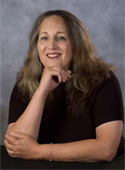 |
|
Marilyn Bishop, Ph.D.
Associate Professor of Physics
e-mail
website
Dr. Bishop’s research is in the areas of theoretical biophysics and theoretical condensed matter physics. In condensed matter theory, she has studied optical properties of semiconductors, transport properties of charge density waves in alkali metals, and many electron interactions in metals. In biophysics, she has investigated the polymerization kinetics of sickle hemoglobin, polymerization kinetics of , and light scattering in biological systems. She and Dr. McMullen were the first to use photonic band structure to study a biological system, when they investigated the question of why the cornea is transparent and the sclera is opaque. Recently she and Dr. McMullen have been studying the effect of charge fluctuations in systems of DNA in polyelectrolyte solutions. |
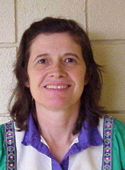 |
|
Danail Bonchev, Ph.D.
CSBC Senior Fellow
Director of Research on Bioinformatics
Professor of Mathematics
e-mail
website
Dr. Bonchev has a background in mathematical chemistry, an area in which he published key papers characterizing topology of molecules and their interactions. His recent research interests are in network theory and its biological applications. Dr. Bonchev teaches the first 3-credits course on “Networks Biology” for the Master in Bioinformatics program. Author of over 200 research papers and author/editor of 15 books, the latest one - “Complexity in Chemistry, Biology and Ecology” - published in 2005 by Springer, New York. |
 |
|
John W. Cain, Ph.D.
CSBC Fellow
Applied Mathematics
e-mail
website
John W. Cain received his Ph.D. in Mathematics from Duke University in 2005. His primary research interests involve applications to physiology, with particular emphasis on cardiac electrophysiology. Dr. Cain's current projects include (i) suppression of electrical alternans in cardiac tissue via feedback control; (ii) temporal patterns of spontaneous initiation and termination of ventricular tachycardias; (iii) the role of spatial heterogeneity in arrhythmogenesis; and (iv) stability of waves in excitable media. |
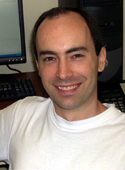 |
|
Mohamed Gad-el-Hak, Ph.D.
Caudill Eminent Professor and Chair
Mechanical Engineering
e-mail
website
Mohamed Gad-el-Hak received his Ph.D. in fluid mechanics from the Johns Hopkins University in 1973. He is renowned for developing the laser-induced fluorescence (LIF) technique for flow visualization; for discovering the efficient mechanism via which a turbulent region rapidly grows by destabilizing a surrounding laminar flow; for conducting the seminal experiments that detailed the fluid-compliant surface interactions in turbulent boundary layers; for introducing the concept of targeted flow control; and for developing a novel viscous pump suited for microelectromechanical systems (MEMS) applications. Gad-el-Hak's work on Reynolds number effects in turbulent boundary layers, published in 1994, marked a significant paradigm shift in the subject. His 1999 paper on the fluid mechanics of microdevices established the fledgling field on firm physical grounds and is one of the most cited articles of the 1990s. |
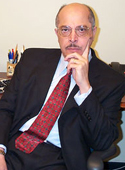 |
|
Monty Kier, Ph.D.
CSBC Senior Fellow
Director of Programs and Fellows
Prof. of Biological Complexity
Medicinal Chemistry
e-mail
website
Lemont Kier is an Emeritus Professor of Medicinal Chemistry, a Senior Fellow in the Center for the Study of Biological Complexity and a visiting professor at the University of Lausanne, Switzerland. He has developed several new approaches to the design of new drugs over the past four decades. His recent research has been the use of cellular automata models to study dynamic, complex systems. He has published over 250 research articles and has authored seven books. |
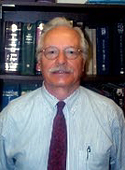 |
|
Philip Worth Longest, Ph.D.
CSBC Fellow
Qimonda Assistant Professor of Mechanical Engineering
Assistant Professor of Pharmaceutics
e-mail
website
Dr. Longest received his Ph.D. in Mechanical Engineering from North Carolina State University in 2002. His dissertation focused on the roles of critical blood particles in the development of vascular diseases and the optimal design of vascular grafts. He then served as a post-doctoral research fellow for a U.S. Air Force Office of Scientific Research sponsored project, conducted at N. C. State University, where he analyzed aerosol transport and vaporization. Dr. Longest has served as a post-doctoral research fellow for the U. S. Environmental Protection Agency, National Exposure Research Laboratory, in Research Triangle Park, North Carolina. In this role, he developed respiratory dosimetry models to assess health risks posed by particulate matter and other pollutants. Dr. Longest joined the VCU faculty as an assistant professor in the Department of Mechanical Engineering in August 2004, where he is continuing his research in multiphase bio-fluid dynamics. |
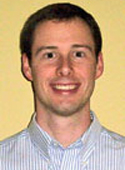 |
|
Francis L. Macrina, Ph.D.
CSBC Senior Fellow
Vice President of Research
e-mail
website
Francis L. Macrina is the Edward Myers Professor and Vice President for Research at Virginia Commonwealth University. Dr. Macrina's scientific interests are in the molecular pathogenesis of infectious diseases, and his research has been continuously supported by the National Institutes of Health for the past 31 years. His current research centers on the genetics of oral bacteria involved in dental caries and in periodontal disease. He is also engaged in educational research to evaluate effectiveness of research ethics instruction to postdoctoral trainees. He has authored over 100 scientific publications. Dr. Macrina has taught scientific integrity to graduate biomedical trainees at Virginia Commonwealth University since 1986. He recently completed terms of service as a member of the ASM Ethics Committee and the Ethics Committee of the American Association for Dental Research. He also has been a consultant to the USHHS Office of Research Integrity and to the National Science Advisory Board for Biosecurity. He has published scholarly papers and a textbook on scientific integrity. The third edition of his widely used text, Scientific Integrity, Text and Cases in Responsible Conduct of Research was published by ASM Press in March, 2005. |
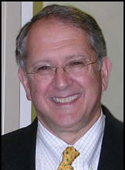 |
|
Tom McMullen, Ph.D.
Affiliate Associate Professor of Physics
e-mail
website
Dr. McMullen started his research career in Experimental Surface Chemistry and then switched to theoretical condensed matter physics. He has studied many problems related to many body systems, including positrons, superconductors, defects, and spin systems. More recently he has been actively pursuing problems in biophysics. He and Dr. Bishop were the first to use photonic band structure to study a biological system, when, when they investigated the question of why the cornea is transparent and the sclera is opaque. Most recently, he and Dr. Bishop have been studying the effects of charge fluctuations on DNA in polyelectrolyte solutions. |
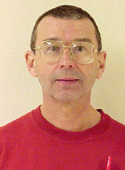 |
|
Dianne T.V. Pawluk, Ph.D.
Assistant Professor
Department of Biomedical Engineering
e-mail
website
Dr. Pawluk received her Ph.D. in Engineering Sciences from Harvard University in 1997. Her dissertation focused on the experimental measurement and modeling of the contact mechanics of the human finger pad. She then served as a post-doctoral researcher at the Mind-Brain Institute at Johns Hopkins University experimentally measuring and modeling the peripheral tactile system. Her current research interests include analyzing mid-level haptic processing through a combination of behavioral, fMRI and computational techniques, with her collaborators at Queen’s University, Canada. Dr. Pawluk has developed and teaches an undergraduate course in Computational Methods for Biomedical Engineers since her arrival at VCU in 2005. |
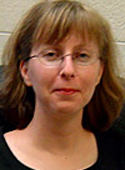 |
|
Michael H. Peters, Ph.D.
CSBC Fellow
Chemical & Life Science Engineering
Professor and Chair
e-mail
website
Dr. Michael H. Peters is currently Professor and Chair in the Department of Chemical and Life Science Engineering at Virginia Commonwealth University. He is also a Fellow of the Center for the Study of Biological Complexity and Affiliate Faculty in the School of Medicine. Dr. Peters conducts both computational and experimental research in the area of real-time biomolecular interactions. His most recent book, “Real-Time Biomolecular Simulations” was published this past January by McGraw-Hill as part of their Biomedical Engineering Series. His current research areas span a broad range of topics in cellular engineering, drug discovery, stem cells and biomolecular computations, the latter of which is supported by the National Science Foundation. Dr. Peters is an elected Fellow of the American Physical Society, a recipient of two university teaching awards, and one named professorship award. |
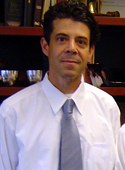 |
|
Ramana M. Pidaparti, Ph.D.
CSBC Senior Fellow
Mechanical Engineering
e-mail
website
Dr. Pidaparti received his Ph.D. degree in Aeronautics & Astronautics from Purdue University, West Lafayette in 1989. Currently, he is a Professor of Mechanical Engineering at VCU. He has been on the faculty of the Department of Mechanical Engineering at Purdue University campus in Indianapolis (IUPUI) for 15 years. Dr. Pidaparti's research interests are in the broad areas of multidisciplinary design, computational mechanics, micro/nanotechnology, biomechanics and related topics. Dr. Pidaparti has published over 180 technical papers in refereed journals and conference proceedings in the areas of computational mechanics related to composites, fracture mechanics, and biomechanics. His current research interests are in MEMS, biological composites, multi-scale modeling methods, computational intelligence methods, and smart materials and structures. He teaches CAE design and Analysis, Design Optimization and Rapid Prototyping & Design courses. He recently published a book titled “Design Engineering and Mechanisms” by Pearson Publishing company. Dr. Pidaparti received a Research Initiation Award from the National Science Foundation and the Young Investigator Award from the Whitaker Foundation. He is a member of Tau Beta Pi, Sigma Gamma Tau, and Who's Who societies. He has won awards for his research and teaching. He is a member of professional societies including American Society of Mechanical Engineers (Fellow), American Institute of Aeronautics & Astronautics (Associate Fellow), American Society of Engineering Education, and Institution of Electrical and Electronics Engineers. |
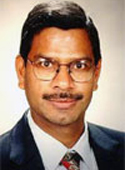 |
|
David Primeaux, Ph.D.
Associate Professor
Computer Science
e-mail
website
Dr. Primeaux is an associate professor in VCU's Computer Science Department. One focus of his research is weak AI. In weak AI, human intellect is treated like a black box, and so the goal is to create systems that exhibit intelligent behavior without trying to replicate the processes involved in human intelligence. Dr. Primeaux is also particularly interested in applying non-traditional AI techniques such as Artificial Neural Networks, Swarms, Genetic Algorithms, and COPEs in the creation of black box models of other phenomena where the mechanisms mapping the input to the output are either not well known or are highly complex. When such models are successful, they can accurately predict system output for previously unseen input. Furthermore, in such systems, perturbations to the model might be used to determine methods to achieve desired system behaviors. |
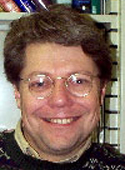 |
|
Jürgen Venitz, M.D., Ph.D.
Associate Professor & Vice Chairman
Department of Pharmaceutics
e-mail
website
Dr. Jürgen Venitz is currently Associate Professor, Depts. of Pharmaceutics, Pharmacy and Medicinal Chemistry, and Director of the Pharmacokinetic-Pharmacodynamic (PK/PD) Laboratory at the School of Pharmacy of Virginia Commonwealth University (VCU), Richmond, VA. He received his M.D. in 1981 from the Universität des Saarlandes in Saarbrücken, Germany, where he also received his Ph.D. in physiology in 1986. From 1981 to 1985, he was Director of Clinical Research and Development at the Institut für Klinische Pharmakologie (IKP) Bobenheim in Grünstadt, Germany. He was in charge of a Phase I Clinical Pharmacology Unit and responsible for design, implementation and data analysis of phase I and PK/PD studies. From 1985 to 1987 he completed a postdoctoral fellowship with Dr. E.R. Garrett at the Beehive, School of Pharmacy, University of Florida, Gainesville, FL. In 1988, he joined the faculty at VCU where he has been teaching and mentoring numerous Pharm.D., Ph.D. and postdoctoral students. He has published and presented extensively to various scientific audiences in the area of PK/PD in early clinical drug development. He serves on multiple university, AAPS, ACCP, ASCPT, NIH, and FDA committees. For his accomplishments, he was awarded ACCP and AAPS fellowship status. He serves as scientific expert consultant in clinical pharmacology with various pharmaceutical companies, as well as the FDA Office of Clinical Pharmacology and Biopharmaceutics; he currently chairs the Clinical Pharmacology Subcommittee to the CDER Advisory Committee in Pharmaceutical Sciences. |
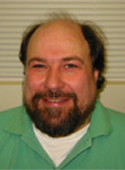 |
|
Kevin R. Ward, M.D.
Associate Professor of Emergency Medicine, Physiology, and Biochemistry
Associate Director, VCU Reanimation Engineering Shock Center
Director of Research, VCU Department of Emergency Medicine
e-mail
website
VCURES
Dr. Ward’s major interests lie in the creation of computational models of critical illness and injury, which utilize a multidisciplinary integrative systems biology approach. This includes the creation of critical illness and injury physiomic data banks based on laboratory animal and human clinical model platforms. Computational models based on such an approach are more likely to lead to rapid therapeutic and diagnostic discoveries and technologies that hopefully will result in improved survival from critical illness and injury. |
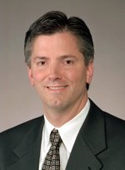 |
|
|
|